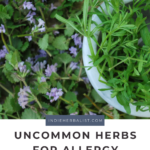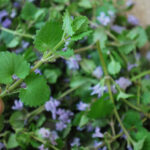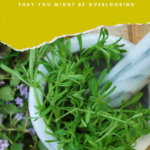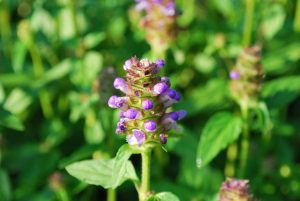Links contained in this post and elsewhere on my website may include affiliate links. When you make a purchase through these links, I earn a commission at no additional cost to you. I only link to products and services that I love - and that I think you will love, too!
Trying to understand your options when it comes to herbs for seasonal allergies? It’s definitely that time of year again! Thankfully, there are several strong herbal allies standing by to offer support. But they probably aren’t the ones you’re thinking about.
Garlic, nettles, and turmeric are three of the most common herbs I see recommended for seasonal allergy support. However, they never made much of a difference for me.
It wasn’t until I really dug deep into herbalism that I discovered herbs that work better. I had to learn to think like an herbalist for the best results! I had some luck using fresh nettles. Traditionally, fresh nettles applied to arthritic joints were used to bring some pain relief. I discovered while I was working in the garden that brushing against a nettle plant dries up my allergies within minutes. Although it works great for me in a pinch, it’s not very fun. Mullein flower and leaf tea also helped to some extent, but personally, I have better results using mullein for dry, nagging coughs in the winter than for seasonal allergies.
Eventually, I found three herbs that became my go-to herbs for allergy season. These are three herbs that I don’t often see anyone talking about when it comes to this category, but they happen to be my favorites!
My favorite herbs for seasonal allergies
So, what are my top three herbal choices when I am struggling through pollen season? Two of them are common springtime weeds that may be growing in your backyard or garden, and one is a native tree that is very common in some parts of the U.S. They are:
- Ground ivy (Glechoma hederacea)
- Prickly ash (Zanthoxylum americanum)
- Cleavers (Galium aparine)
I’ll explain a little more about each of them below.
These herbs can be used as simples (individually) or incorporated into herbal blends based on your unique needs. Personally, I like the convenience of herbal extracts, but these herbs can also be used as teas. If you are new to herbs, an experienced herbalist can help you determine what serving size is most appropriate for your needs.
Ground Ivy
Glechoma hederacea
This herb has a heady aroma that helps clear the upper respiratory tract and supports lung health. I like making an extract or using it as a tea. Ground ivy can be used fresh or dried.
It has a drying, astringent energy that balances excessive upper respiratory secretions. Historically, it has been used for
- catarrh
- congested nose and sinuses
- hot, wet coughs (especially those with fluid in the lungs)
- congestion in the ears
- middle ear infections
Prickly Ash
(Zanthoxylum americanum)
Sometimes, offering direct support to the mucus membranes is a good option during allergy season. I’ve found this to be especially true when facing chronic allergies that seem to last most of the year. Looking at things from a constitutional and energetic perspective, chronic congestion and mucus production point to laxity and dampness in the mucus membranes. Coldness may also be present.
So how does this apply to herbs for seasonal allergies? It means that drying, warming, herbs that tone or act as an astringent on the mucus membranes may be a good match. Australian herbalist Kerry Bone writes about prickly ash being a mucosal tonic useful for post nasal drip in A Clinical Guide to Blending Liquid Herbs.
Prickly ash is warming, stimulant, and diffusive. A few other traditional uses of prickly ash include:
- Tonic to the mucosa
- Catarrh and post-nasal drip
- Alterative
Last but not least, let’s look at cleavers.
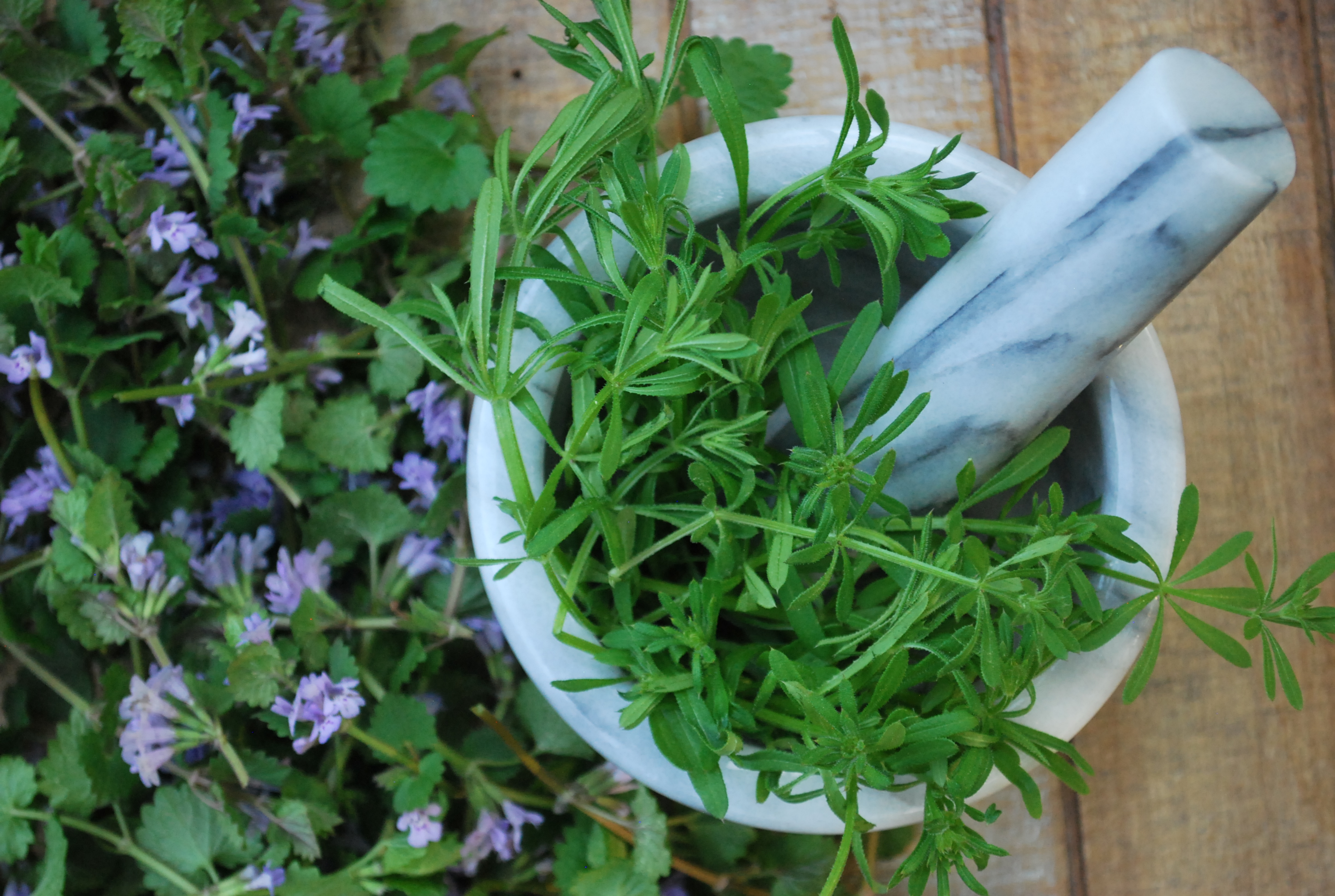
Cleavers
(Galium aparine)
This herb is one of my go-to allergy season plants because it is a seasonally available alterative. There are several definitions of “alterative” used by modern herbalists. The one I find most helpful defines alteratives as herbs that support the body’s natural processes for eliminating metabolic waste.
Cleavers is an alterative with an affinity for the kidneys and the lymph glands. Interestingly, in The Earthwise Herbal: A Complete Guide to Old World Plants, Matt Woods notes dry eyes are a specific indication for cleavers. I find it’s a good match when allergies leave me with dry eyes or a dry, prickling sensation in the ears, nose, or throat.
Cleavers is cooling and moistening. A few of the traditional uses for cleavers include:
- swollen lymph nodes, especially in the neck and around the ears
- stagnant fluids (edema, lymphedema)
- diuretic
How to think like an herbalist for allergy season
Curious about the mechanics of allergies from an herbalist’s perspective? Read: Problem Solving with Herbs for Allergy Season.
